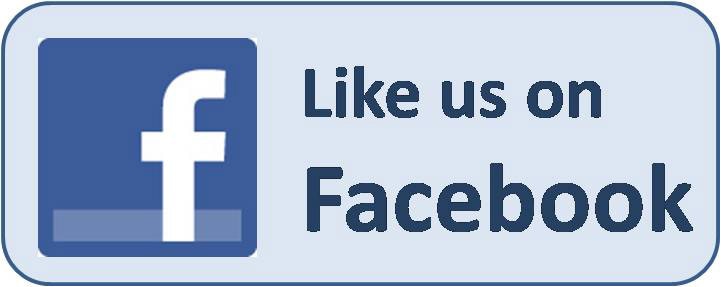A Comparative analysis of Bangladesh Water Management Practice with European Water Framework Directives
DOI:
https://doi.org/10.18034/ei.v1i2.212Keywords:
Integrated Water Resources Management (IWRM), Common Implementation Strategy (CIS), Water Framework Directive (WFD)Abstract
Until 90, water management plans in Bangladesh focused mainly to controlling floods and facilitates drainage and irrigation which were segregate plans, and caused detrimental effects of other sectors such as water supply, sanitation, industry, fisheries plus environmental and other in-stream demands. For avoiding the fragmentation, the country has achieved a remarkable progress in Integrated Water Resources Management (IWRM) activities after the period of 90.The Flood Action Plan (FAP, 1989-1995) was the pioneer of IWRM plan in Bangladesh. In 1995, Government approved The Bangladesh Water and Flood Management Strategy (BWFMS) which was an outcome of FAP. Under the recommendation of BWFMS, Bangladesh prepared NWPo and NWMP which were the holistic and government approved documents for applying integrated water resources practice in Bangladesh.The European Union has a long experience for basin wide integrated water resources management within Europe. The European Parliament and the Council of the European Union established a framework for Community action in the field of water policy in 23 October 2000 European Union’s water policies such as the Water Framework Directive (2000/60/EC). The EU’s experience (including its 27 Member States) is based on the best scientific knowledge and available technologies. In particular, the Water Framework Directive (2000/60/EC) mainly focuses on river basin management rules and principles. It is recognized that the Water Framework Directive (WFD) might be used as an example for basin wide IWRM implementation and economic development for the developing countries like Bangladesh, taking into account their socio-economic conditions.This study will show that, how the European Union Water Framework Directive (WFD) model can be adapted for the effective implementation of integrated water resources in Bangladesh. A Common Implementation Strategy (CIS) has been depicted for sustainable IWRM in Bangladesh.
Downloads
References
ADB-RETA, 2009. Regional Technical Assistance Supporting IWRM ( Bangladesh),Water Resources Planning organization, Ministry of Water Resources, Government of the People’s Republic of Bangladesh.
Ahmed, S. (2008), Integrated Water Resources Management: From Policy to Practice through a Comprehensive NWMP-A case Study Bangladesh.
Annual Development Budget in Bangladesh,(www.bengaliwiki.com/page/Development+Budget)
Bangladesh Water Development Board (www.bwdb.gov.bd)
Barua, S. (2006), River Basin Management Guidelines for water management in Bangladesh.
Chowdhury , J.U. (2011), Integrated Approach and Equity Principles to promote Sustainable Water Management in Bangladesh, IWFM, BUET.
Department of Environment (www.doe-bd.org)
Department of Public Health Engineering (www.dphe.gov.bd)
Francés, F. (2011), Online questionnaire survey to ffrances@hma.upv.es on on European Water management System and Developing country like Bangladesh.
Global Partnership (www.gwp.org/en/About-GWP/History)
Global Water Partnership, 2000. Technical Advisory Committee (TAC) Background Papers, NO. 4, Integrated Water Resources Management, , SE -105 25 Stockholm, Sweden)
Interuniversitary Programme in Water Resources Engineering (IUPWARE) second year subject “Social, Political, Institutional, Economic and Environmental Aspects of Water Resources’’ taught by Professor, Ph. Quevauviller.
Joint River Commission, Bangladesh (www.jrcb.gov.bd)
Local Government Engineering Department (www.lged.gov.bd)
Location map of Bangladesh in World (http://www.mapsofworld.com/bangladesh)
Meldrum, A. (2011), online questionnaire survey to Anita.Meldrum@gcu.ac.uk on European Water management System and Developing country like Bangladesh.
MoWR, 1999. National Water Policy, Ministry of Water Resources, Government of the People’s Republic of Bangladesh.
MoWR, 2010. Draft Bangladesh Water Act, Ministry of Water Resources, Government of the People’s Republic of Bangladesh.
Research projects (IWRM.Net).
United Nation Water (The Dublin statement- www.gdrc.org/ uem/water/dublin-statement),
WARPO, 2001b. National Water Management Plan, Vol.1: Summery Report, Vol.2: Main Report, Water Resources Planning organization, Ministry of Water Resources, Government of the People’s Republic of Bangladesh.
WARPO, 2009. Annual Report 2007-2008, Water Resources Planning organization, Ministry of Water Resources, Government of the People’s Republic of Bangladesh.
Water Resources Planning Organization (www.warpo.gov.bd)
Water resources Wikipedia (http://en.wikipedia.org/wiki/Water_resources)
WFD, 2000/60/EC. Water Framework Directive (www. ec.europa.eu/environment/water/water-framework)
--0--
Published
Issue
Section
License
Engineering International is an Open Access journal. Authors who publish with this journal agree to the following terms:
- Authors retain copyright and grant the journal the right of first publication with the work simultaneously licensed under a CC BY-NC 4.0 International License that allows others to share the work with an acknowledgment of the work's authorship and initial publication in this journal.
- Authors are able to enter into separate, additional contractual arrangements for the non-exclusive distribution of the journal's published version of their work (e.g., post it to an institutional repository or publish it in a book), with an acknowledgment of its initial publication in this journal. We require authors to inform us of any instances of re-publication.









